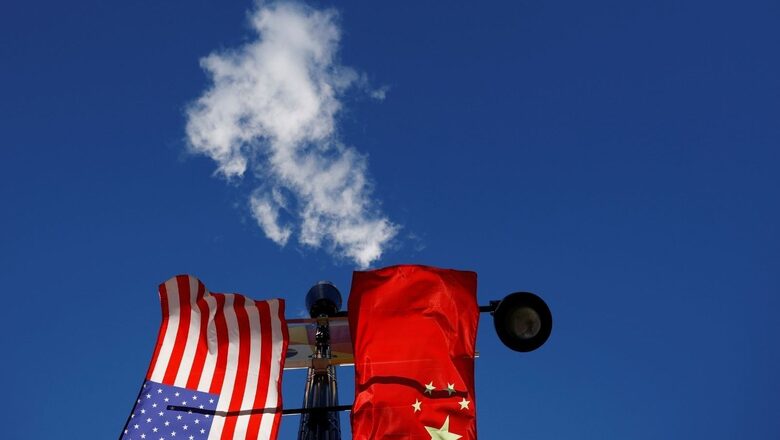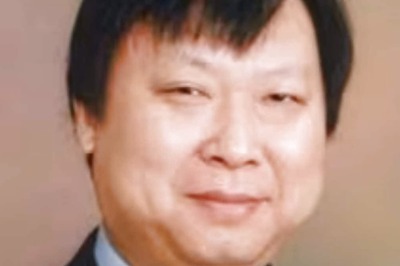
views
In the midst of continued tensions over trade, cyberthreats, the climate, Taiwan and human rights, United States President Joe Biden will hold a virtual summit with President Xi Jinping of China on Monday, in what experts predict could be a step towards progressive de-escalation, or engagement between the two competing nations.
The summit, which was announced by the White House on Friday, has been in the works since early October, when Jake Sullivan, Biden’s national security adviser, held a six-hour meeting with Yang Jiechi, Beijing’s top diplomat. Jen Psaki, the White House press secretary, said in a statement that Biden and Xi would have a video call Monday evening.
Pressing Issues Between US & China
The summit takes place at a time when the United States and China are at odds on major geopolitical issues such as trade, human rights, military buildup, Taiwan, and cybersecurity.
In recent months, China has increased military exercises near Taiwan, a show of force that has not gone unnoticed by the Biden administration.
Beijing has also received international condemnation for its campaign to “reeducate” members of its Muslim minority ethnic group, the Uyghurs. This “reeducation” push includes forced labour, mass incarceration in “reeducation” camps for over a million people, and the alleged sterilisation of Uyghur women.
The United States and its allies sanctioned several officials in Xinjiang Province, the traditional homeland of the Uyghur people, in March. Secretary of State Tony Blinken has called China’s treatment of Uyghurs “genocide.”
In terms of trade, Beijing has lobbied the Biden administration to lift Trump-era tariffs on over $350 billion in Chinese goods. But Washington has stalled, opting to keep the tariffs in place and try to restart trade talks.
Despite these deep differences, Biden is making it a priority to maintain open lines of communication with Beijing.
Engagement or ‘Neo-engagement’?
Psaki said during her daily briefing for reporters at the White House that the plan to hold the summit was a reflection of the president’s belief that the US and China must continue to engage each other, even as they compete on the world stage economically.
“We, of course, believe in intense competition,” she said. “We believe and understand intense competition as part of that relationship. We also believe that that requires intense diplomacy.”
Meanwhile, senior American officials told the New York Times that Biden has focused efforts on ensuring that the US could compete with China over the long run. They pointed to the passage this month of the bipartisan infrastructure bill as evidence that the administration was serious about not falling behind.
The officials, who spoke on condition of anonymity to preview the diplomatic conversations, said the president would make clear that the US was ready to engage in stiff competition but did not want open conflict with China and was eager to cooperate in areas in which the interests of the two countries were aligned.
According to a report in the Diplomat, contrary to popular belief in the United States, engagement between Beijing and Washington has not ceased as a result of the changing political climate. Both sides’ exchanges in trade, education, and finance have grown stronger in recent years, and they are unlikely to be completely halted by pure political will.
Despite former President Donald Trump’s push for “decoupling,” China remained the United States’ largest trading partner in goods and the largest source of US imports in 2020. China is the second-largest foreign holder of US Treasury securities, according to Rhodium Group estimates (at $1.05 trillion as of October 2020), the report mentions. The US market still requires Chinese imports, as the US trade deficit with China stood at $130.7 billion in the first three months of 2021, according to the US Census Bureau.
Xinrong Zhu and Dingding Chen in their report argue that beyond the classic engagement, a “neo-engagement” could define future US-China relations. According to them, this includes major three components – the first being that engagement would not be terminated. It would continue to be regarded as the primary form of interaction between China and the United States. The second feature, they said, reflects a recent shift in Washington’s approach to China, namely the rise of partial “decoupling.” Washington is reviewing its interactions with China in a variety of areas, with a particular focus on those in which it regards Beijing as its main rival. Washington’s “testing ground” for this “decoupling” could be the technology sector. The final feature is competition, which may be the primary focus of China-US relations in the long run. With the current engagement likely to remain stable, bilateral competition over norms or standards within the international community could be the new way for Beijing and Washington to interact on the global stage, the report argues.
This “neo-engagement” approach does not rule out the possibility of major disagreements or confrontations between Beijing and Washington, the authors argue, but the core of the approach provides a scenario in which the indispensable engagements and cooperation for both sides remain, even as both sides are deeply entangled in competition or confrontation.
But a ‘Growing’ Xi Recalibrates Tensions
The meeting between Biden and Xi could also be a tense one, as the two leaders deal with more contentious issues, which includes a burning one – trade. A deadline is approaching at the end of the year for China to purchase an additional $200 billion of US products under a 2019 trade deal.
According to tracking by Chad P. Bown, a senior fellow at the Peterson Institute for International Economics, China is on pace to fall roughly 40% short of that promise. American officials have been pressing their Chinese counterparts to close the gap on promised purchases of US energy, agricultural products and medical devices, as well as Boeing airplanes. They are also pushing them to improve in other areas in which China has fallen short of its trade deal commitments, like respecting intellectual property provisions.
The trade deal, signed by President Donald Trump in January of last year, left tariffs in place on the bulk of products traded between China and the US each year. While the business community has been pushing to reduce the tariffs, Myron Brilliant, an executive vice president of the US Chamber of Commerce, said such a breakthrough did not appear likely Monday night, though officials might make progress on issues like easing visa restrictions, creating a weapons dialogue or encouraging China to purchase more US exports.
“The political constraints on both sides mean our expectations should be somewhat modest for this call,” Brilliant said. “A win right now is an agreement on both sides to reduce the tensions in the relationship.”
Xi, who further cemented his power at a key meeting of the Communist Party elite earlier, overaw the passing of a landmark resolution that paves the way for him to secure a third term in office. Senior officials on Thursday approved a resolution on the party’s “major achievements and historic experiences” since its founding 100 years ago, placing Xi on the same pedestal as the nation’s founding father Mao Zedong and reformist leader Deng Xiaoping, who unleashed an economic boom that turned China into the world’s second-largest economy.
And with this elevated stature and undisputed rule within the authoritarian, one-party state now established, Xi is preparing to sit down with Biden. Ahead of the meeting, Xi Jinping said the Asia-Pacific region must not return to the tensions of the Cold War era.
Xi, in a recorded video message to a CEO forum on the sidelines of the Asia-Pacific Economic Cooperation (APEC) summit hosted by New Zealand, said attempts to draw ideological lines or form small circles on geopolitical grounds were bound to fail.
His remarks were an apparent reference to US efforts with regional allies and partners including the Quad grouping with India, Japan and Australia, to blunt what they see as China’s growing coercive economic and military influence.
With inputs from New York Times, CNN.
Read all the Latest News here
















Comments
0 comment